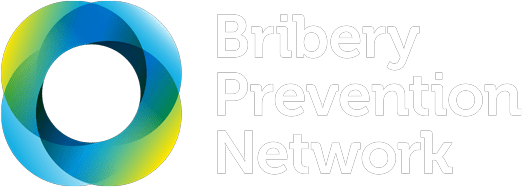Prevent bribery from happening in the first place by taking steps to recognise the risks and implement effective policies and procedures. This collection of resources offers guidance on how to implement effective controls to prevent bribery and corruption in your business and supply chain. Access practical tools to identify red flags, conduct risk assessments and due diligence and build a culture of integrity.
Resources for preventing bribery
To carry out effective risk assessments, Australian businesses operating overseas should be aware of the bribery and corruption risks in the country in which they operate. Designed for Australian exporters, this resource provides risk profiles for 50 countries, including the corruption rating, sectors where corruption may occur, and applicable laws and regulatory bodies. This resource is provided as part of Austrade's suite of anti-bribery materials.
Part of Austrade’s “Guide to exporting”, this comprehensive resource offers headline points that all Australian businesses must be aware of when seeking to prevent corruption in their overseas operations. It links to a detailed guide with 12-steps to an effective anti-bribery and corruption program, and provides country-specific information.
Support the delivery of an effective compliance program by ensuring business leaders and senior managers demonstrate commitment to compliance programs. This resource discusses the importance of setting the tone from the top and identifies practical steps to demonstrate top level commitment and build a culture of compliance. This webpage is available in three languages: English, Spanish and Portuguese.
A practical sector specific fact sheet on business integrity that can be used for training. Demonstrates the value of effective systems and provides steps to detect, prevent and manage corruption risks and enhance transparency among company partners. Outlines the benefits to business and consequences for a mining company of being associated with corruption.
Understand what constitutes a facilitation payment with this guide. This resource provides a list of examples, explains associated risks, and sets out the Australian law and Austrade policy in relation to facilitation payments. It also includes a brief hypothetical scenario and offers guidance on how to resist making facilitation payments. This resource forms part of Austrade’s suite of anti-bribery materials.
Draft guidance on adequate procedures to prevent the commission of foreign bribery
by Attorney-General's Department
The Australian Government is proposing reforms that will require companies to implement and maintain adequate procedures to prevent an associate (such as an employee, agent or subsidiary) from bribing foreign public officials. This draft principles-based guidance sets out the types of measures companies should consider implementing and includes case studies to demonstrate how these measures could be applied in practice.
This resource offers a high-level overview on how your organisation’s anti-bribery and corruption procedures might be designed to mitigate identified risks as well as prevent deliberate unethical conduct by associated persons. It explains features of a proportionate approach to developing anti-bribery procedures and clearly sets out characteristics of such an approach. This resource is part of Austrade’s suite of anti-bribery materials.
A practical corruption glossary that provides definitions with animated images. Useful as a training tool to help staff develop their understanding of corruption terminology, including terms such as 'facilitation payments'. Each term includes a paragraph defining the phrase, as well as a description of why it matters.
A 30-minute training module that provides good practice anti-bribery training for companies facing requests for bribes. A useful benchmark to assess training programs against. Offers headline points on the potential damage of bribes and some prevention steps. The tool includes a trainer’s handbook with PowerPoint slides.
Remuneration and promotion structures are one of the most powerful ways that companies communicate their values and priorities to staff. Section nine of the Austrade publication "Anti-bribery and Corruption (ABC): A guide for Australians doing business overseas" gives a simple overview of how compliance, risk management and ethical behavior can be reinforced through incentive structures (and how the wrong behaviors can also be reinforced). This resource is part of Austrade’s “Guide to exporting”.
Undertake due diligence with these five practical online tools when seeking to prevent and address bribery and corruption in business operations. These include guidance on public procurement due diligence and interactive risk assessment tools. Flowcharts are provided to support businesses in screening partners, agents and contractors. The tools are provided as part of GAN Integrity’s guide to building a compliance program.
This resource provides interactive guidance on anti-bribery and corruption good practice for companies operating in the United Kingdom and overseas. It includes practical guidance on conducting risk assessment and third party due diligence, implementing ABC training and identifying high risk areas. It also provides country-by-country summaries of anti-bribery laws to assist companies operating abroad.
A common perception is that bribery is required to succeed in business. This article helps managers to challenge that perception by setting out four practical strategies for businesses to prevent bribery. These include putting a resistance plan in place, building the cost of avoiding bribery into business projections, avoiding markets with high bribery risk and modifying performance-based incentives.
Designed to promote a culture of ethical business practice in the financial services industry, this guide offers top line advice on how to develop, implement and maintain an effective anti-bribery and corruption compliance program. To be read in conjunction with authoritative guidance issued in jurisdictions where the financial institution is conducting business.
An anti-bribery checklist that helps assess where you stand on countering bribery. Provides practical guidance for companies to assess their commitments, implementation, and monitoring policies and practice, as well as their public reporting. Useful for both small and larger businesses. Both staff and senior management teams would benefit from using the checklist.
